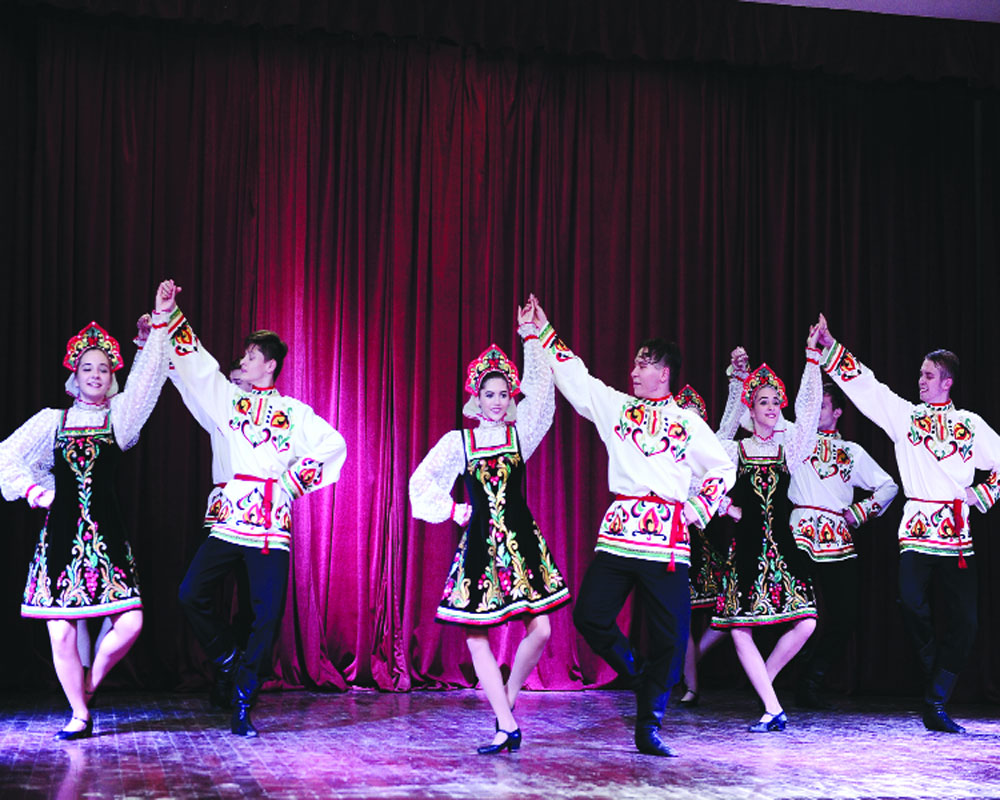As the children’s folk dance group Kalinka toured cities, director Natalya Levitskaya-Filippova talks about her challenges and the thrill of performing in India. By Chahak Mittal
Long ago, tunes of legendary actor Raj Kapoor’s iconic song “Sir par lal topi roosi, phir bhi dil hai Hindustani†would echo on the streets of Moscow and St Petersburg. The link between the two nations is subliminal and Bollywood, arts and politics have played a major part in maintaining them over the years. Which is why generations have grown up on nostalgia. But it is the generation next that the children’s folk dance group called Kalinka is intent on nurturing, indicative of an ethno-surge that is sweeping both countries at the moment.
Directed by Natalya Levitskaya-Filippova, the traditional folk dance group from Russia celebrated the 15th anniversary of its first concert in Delhi and recently performed at the Rosatom Festival of Science and Culture.
“Besides showing the best part of Russia, we meet representatives of different cultures from all around the world and learn a lot from them. The best way to learn a new culture is by experiencing it. Arts and culture are free of politics so when people share what they have, the world becomes a better place. Such programmes should happen more often,†Natalya says.
Founded in 1968 by Alexander Filippov, the Kalinka has trained more than 20,000 children in 50 years. It is a legacy that Natalya has followed since her childhood. She says that Alexander Filippov was a “very bright person,†who created a team that “gives joy and love to both — children, who dance, and spectators, who come to the concerts.â€
Talking about how the group has evolved over the years, she adds, “We are trying to preserve what he had created as much as we can. There haven’t been many changes since it had started. There has been development with time and there is always space for some improvement. The team’s task is not just to change but to take itself to an all-new level through choreography, stunts and elements while keeping its originality intact,†she believes.
One of the most unique features were that the team came with 3,000 hand-sewn costumes. From sarafan (peasant pinafore dress), red headdresses, white skirts, kokoshnik, kosovorotka to plain dark-coloured trousers, the stage was filled with frills for their folk dances: Lozhkari, the rhythm of spoons, and Yablochko, the dance of the Russian sailors.
With the focus on choreography, the dances by both boys and girls reflected the richness of the national culture with many regional spices. Natalya believes that India and Russia share a similarity, i.e. both have a rich and diverse heritage in arts. “Russian culture differs from one region to another. I think it’s the same in India as well,†she says.
It takes a lot of preparation when it comes to leading a team on the international forefront, so what were Natalya’s struggles and practices? She answers, “We have performed abroad for several years. Though pre-activities don’t take too much time, we choose the programme carefully and then do the necessary number of rehearsals. It’s always interesting to come to different countries like India to perform. We have daily rehearsals before we travel abroad.†On an average, 20-30 dancers go on the tour. Following a discipline during the rehearsals, it becomes simple for the trainers to work backstage as well as onstage.
This time, only 11 children performed. “I can’t say it was a challenge for us because we were ready to perform in a number as big as up to 100 people and more as well,†she says.
She loves watching different kinds of classical Indian dances. “Indian dance consists of thousand of symbols, where every gesture means something. Since I am an amateur from the point of view of Indian culture, I do not undertake performing it for the fear of doing something wrong. I would love to consider an opportunity to work with an Indian choreographer and create something together,†she says.
She shares one of her experiences of collaborating with Indian dancers. “We performed with a few Indian girls. And it turned out to be awesome. Our children watched the Indian dancers open-mouthed,†she says.
She believes that the people of India are its “biggest asset. They are highly sensitive when it comes to their taste in art, especially music and dance.â€


























